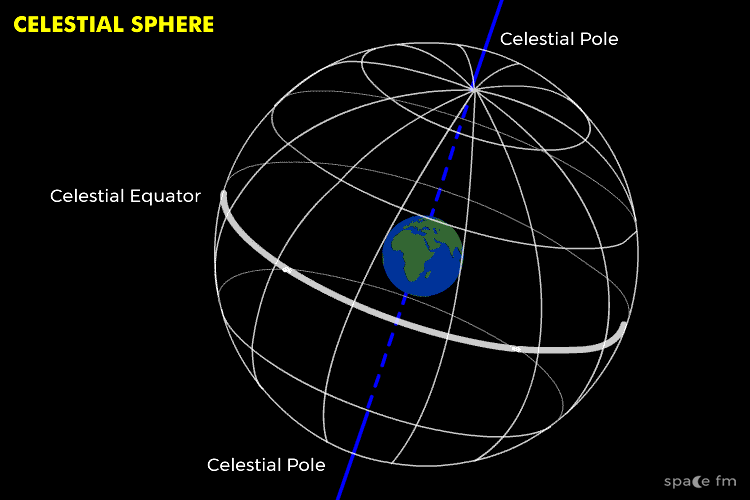Celestial Sphere
6.7 - Understand the meaning of the terms:a) celestial sphere
b) celestial poles
c) celestial equator
5.6 - Understand the terms First Point of Aries and First Point of Libra
The Celestial Sphere is an imaginary sphere around Earth. We can imagine that all natural objects in the sky can be plotted on this so we can measure and understand their apparent positions.
Our poles are projected outwards to the sky and known as celestial poles. Likewise our equator is projected outwards and known as the celestial equator.
Make sure you have read the Ecliptic page by this point.
The point at which the sun on the ecliptic crosses the celestial equator at the vernal equinox is known as the 'First Point of Aries' (named after the constellation where it took place many years ago). Where it crosses the equator at the autumnal equinox it is known as the 'First Point of Libra'. Due to the effects of precession these points have moved and now the First Point of Aries is now in Pisces and the First Point of Libra now is in Virgo.
There are two coordinate systems we use in astronomy:
Before you carry on though, let's look at how the Sun fits into this.
An observer is located at a certain place, between the equator and poles, they will see stars below and above the celestial equator as the ecliptic is at an angle of 23.5° in the sky. When the Sun is at the highest point in daytime at noon we can work out its altitude.
Sun Altitude = Sun Declination + (90° - Latitude of Observer)
So for London (51°N) in late June this might be
Sun Altitude =20° (Declination) + (90°-51° =39) = 59°.
In December this would work out as -23° (Declination) + 39 = 16°
Animation
Links
- Apparent Movement of a Star Simlulator
- Astronomy Notes Co-ordinates
- University of Tennessee Celestial Coordinate System


 | © All Rights Reserved |
| © All Rights Reserved |